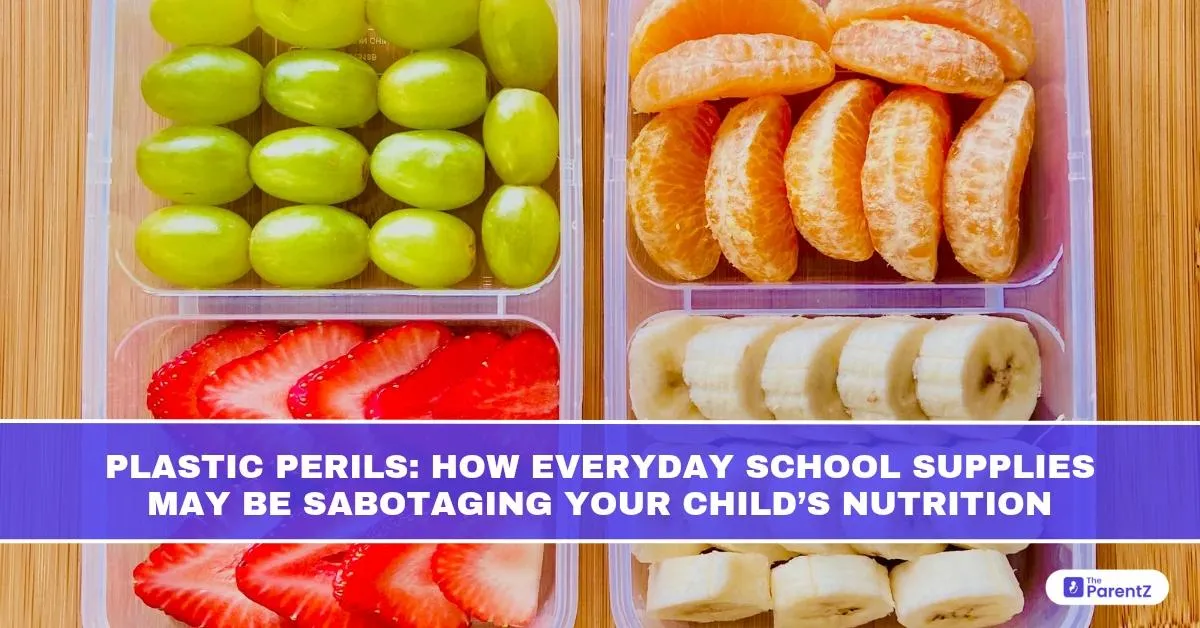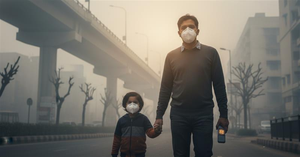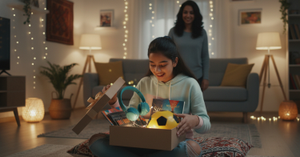“A healthy tiffin starts not just with food but with what it’s packed in.”
Every morning, parents pack meals with love, thinking about vitamins, balance, energy, and taste. But what if the very tools used to serve this carefully prepared food are undermining the nutrition? From lunchboxes and water bottles to food wraps and forks, everyday plastic school supplies could be exposing children to chemicals that interfere with how their bodies process food.
The Chemical Reality of School Gear
Most mass-produced plastic school supplies, especially those not certified for food use, contain synthetic compounds designed to increase flexibility, color, or durability. These include:
- Phthalates: Used to soften plastic
- Bisphenols (BPA, BPS): To make plastic clear and rigid
- Styrene: Found in disposable cutlery and foam lunch containers
- Vinyl chloride: Found in cling wrap and some flexible lids
While small doses may seem harmless, children are more sensitive to these substances due to their growing bodies and faster metabolism.
How Plastics Affect Nutrient Absorption
Plastic-related chemicals don’t just sit passively in containers; they can interact with food in ways that impact digestion and nutrient use.
1. Disrupting Digestive Enzymes
Certain plastics release compounds that may interfere with digestive secretions, including stomach acid and enzymes needed to break down food.
Impact: This reduces how well proteins, fats, and carbs are absorbed, meaning even healthy meals may be less effective in nourishing your child.
2. Blocking Micronutrient Uptake
Studies have found that phthalates and bisphenols can impact the transport proteins responsible for absorbing vital nutrients like:
- Iron
- Zinc
- Calcium
- Magnesium
These minerals are crucial for:
- Brain development
- Immunity
- Bone health
- Energy levels
Even mild deficiencies over time can lead to fatigue, low attention span, and weakened immunity.
3. Inflammation in the Gut Lining
Plastic microparticles and residues can cause low-grade inflammation in the gastrointestinal tract, especially when hot food is packed in plastic.
This may:
- Affect gut bacteria balance
- Increase the risk of bloating, discomfort, or altered bowel movements
- Reduce the ability of the intestine to absorb key nutrients
Plastic in Non-Food School Supplies: A Hidden Source
It’s not just lunch-related items that contribute to the problem. Other common school items can also be risky if handled near food:
Erasers and Plastic Pencil Cases
Some erasers and plastic cases contain PVC (polyvinyl chloride), which can leave chemical residues on fingers. When children eat with unwashed hands, these residues may transfer.
Crayons and Stickers
Low-cost school supplies may contain lead or cadmium, heavy metals that interfere with neurological development and can reduce appetite or impair iron absorption.
Common Offenders in the Tiffin Box
Let’s list some plastic items that might be sabotaging meals:
| Item | Potential Risk |
| Colorful plastic spoons | Leaching when in contact with warm food |
| Plastic cling wraps | Vinyl compounds enter oily foods |
| Disposable forks/plates | Styrene release with heat or moisture |
| Partitioned lunch boxes with printed lids | Chemical paints and adhesives |
| Juice boxes with plastic straws | Phthalates and microplastic particles |
Long-Term Effects on Child Health
Ongoing research links long-term low-level chemical exposure to:
- Poor appetite and taste changes
- Altered metabolism (risk of obesity or insulin resistance)
- Increased food sensitivities
- Behavioral issues linked to nutrient deficiencies (like low iron or zinc)
A Word from the Experts
Dr. Nidhi Sharma, a pediatric nutritionist in Delhi, explains:
“I’ve had parents complain that their child eats well but still seems tired or falls ill often. When we trace the pattern, we often find that storage and utensils are part of the problem. It’s not just what they eat, but how it’s delivered to the body that matters.”
How Parents Can Protect Their Child’s Nutrition
Here are small changes with big benefits:
- Switch to Steel or Ceramic
Use stainless steel lunch boxes and spoons. Ceramic or bamboo cutlery (for older children) is also safe.
- Never pack hot food in plastic
Let food cool before packing, or use an insulated thermos with a steel interior.
- Teach hand washing before meals
Especially important when kids handle school supplies made of plastic or rubber.
- Skip flavoured plastic bottles
They may contain sweeteners and leach more chemicals. Choose certified, food-safe water bottles.
- Use parchment or banana leaves instead of cling wrap
They’re natural, chemical-free, and eco-friendly.
Checklist: How to Audit Your Child’s School Kit
- Lunchbox is stainless steel or food-safe ceramic
- Water bottle is ISI or FDA certified (preferably non-plastic)
- Cutlery is non-plastic and undamaged
- No printed cling wrap or plastic wrap for oily foods
- Art supplies are non-toxic and lead-free
- Hands are washed before eating
Final Thoughts: Nutrition Is More Than Just Food
Modern parenting is tough, and we often rely on what’s quick and easy. But hidden toxins in everyday school supplies can silently undo your efforts to feed your child well. By becoming more mindful of these hidden dangers, you’re taking a powerful step toward protecting their nutrition, growth, and long-term health because the best lunch is one that nourishes both the body and the future.








Be the first one to comment on this story.